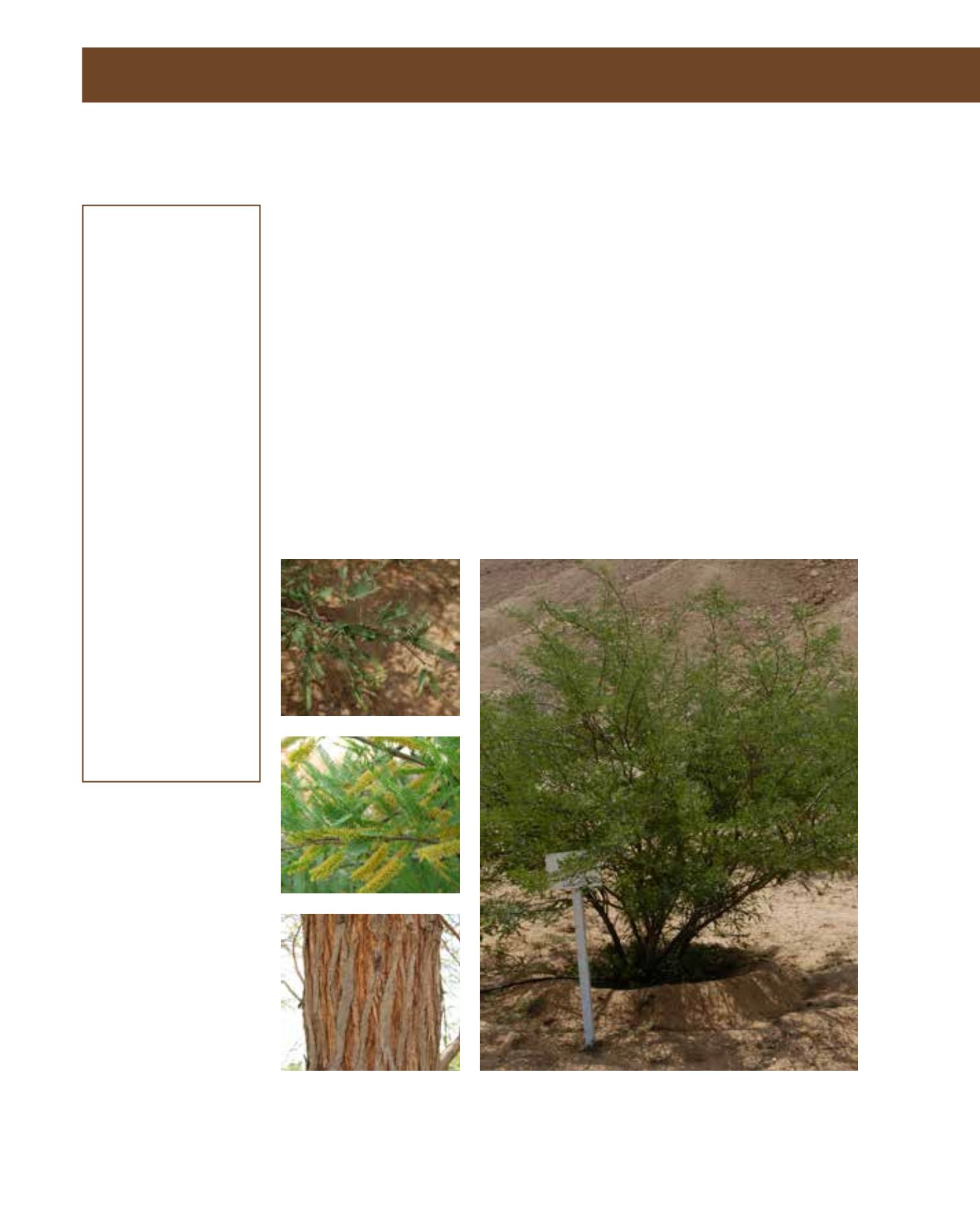

GENERAL
Origin
:
Mediterranean,
sub-tropical
Vigour
:
fairly fast
growing
Humidity
:
extremely arid,
very arid, semi-
arid, semi-humid,
very humid
Propagation :
sowing and
pricking out,
cuttings
Maintenance :
moderate
CONDITIONS
Urban climate :
vulnerable
Dessication :
resistant
Stagnant water :
vulnerable
Irrigation
:
low
Salinity/ppm :
high (5000 ppm)
Hardiness
:
-6°C
SHAPE
Type
:
tree
Height
:
7 m-10 m
Spread
:
9 m-12 m
Foliage
:
evergreen
FLOWER
Colour
:
pastel white
Size
:
6 cm - 8 cm
Period
:
April - June
FRUIT
Type of fruit :
pod
Fruit size
:
20 cm - 15 cm
Toxicity
:
edible when
processed
The Argentine Mesquite is a semi-evergreen, upright, vase-shaped tree with a broad canopy,
which grows to 10 m in height and spread. P. alba together with P. chilensis and P. juliflora
were introduced into the Kingdom and Gulf States as roadside trees, and for other ornamental
purposes. This handsome tree is well adapted to arid habitats, and has been seen to grow well
in Arriyadh. Its short trunk has a thin, greyish-brown bark. Delicate, bluish-green, bipinnate
leaves with paired leaflets are more closely spaced than those of other Prosopis species. The tiny
flowers, which attract bees, are yellowish catkins which bloom in spring; fruit pods are up to 20
cm long and generally highly curved. Stems and trunks sometimes bear large thorns in a zigzag
fashion; the bark is dark and rough. Trees require full sun and reflected heat, and will grow in
poor, alkaline, saline soils and have deep roots reaching the water table. Requiring no irrigation
after establishment, periodic deep watering improves appearance. They cannot withstand a series
of heavy frosts. Propagation is by seed and cuttings. Maintenance requirements are high, owing
to pod, flower and leaf litter, and the plants need training, secure staking and pruning in late
summer for a strong structure. P. alba has landscape value as a small shade tree, in street medi-
ans, buffer zones, screens and windbreaks, and is effective in parks, but is not suitable for lawns.
Possible problems and other cultural requirements are the same as for P. juliflora.
245
Prosopis alba,
Mimosaceae
Argentine Mesquite
















